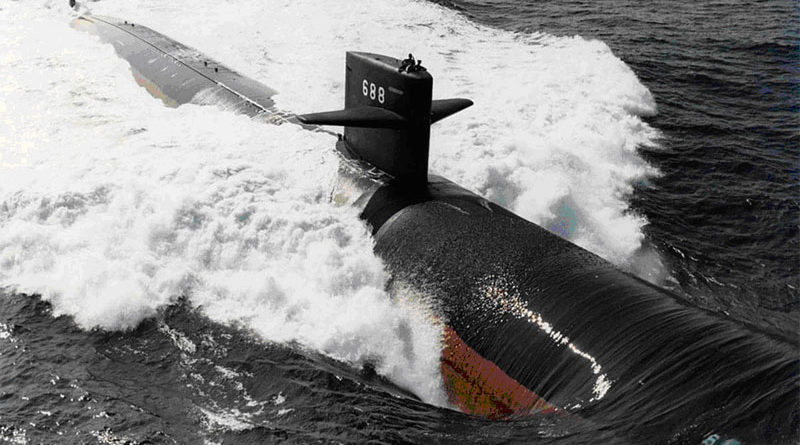Why The US Won’t Give India Nuclear Submarines
September 20, 2021
The US has cited its stringent domestic laws to consistently refuse to discuss the issue over the past 15 years. In pic USS Los Angeles (SSN-688), lead ship of the class submarine
On September 16, Indian Navy officials read the text of AUKUS, a US-UK-Australian military alliance, with a sense of dismay. The high point of AUKUS is that both the US and the UK will equip Australia to design and build up to eight nuclear-powered attack submarines (SSNs) to counter the rising threat of China in the Indo-Pacific. China’s belligerence is a common concern for several countries in the region, especially the ‘Quad’ countries of US, Australia, Japan and India, who revived their grouping last year.
Indian Navy chiefs and naval veterans have raised the prospect of Indo-US collaboration on nuclear reactor propulsion technology only to have been politely rebuffed by their US counterparts. During a Track 2 dialogue held in Australia two years ago, the US side was emphatic in its refusal, recalls an Indian representative who was part of the event. The US Congress would never contemplate discussing anything to do with the transfer of nuclear propulsion, they were told.
This request might have sounded out of place considering that India already operates nuclear submarines—becoming the world’s sixth country to do so when it commissioned the INS Arihant in 2016.
The Arihant, however, is an SSBN (nuclear-powered ballistic missile submarine)—a slow-moving ‘bomber’ and a stealthy launch platform for nuclear weapons. The Arihant and three more SSBNs under construction are part of the Strategic Forces Command. What the navy wants are SSNs, which can perform a series of tactical missions, from escorting SSBNs to accompanying its carrier battle groups and hunting enemy warships.
Courtesy: India Today

